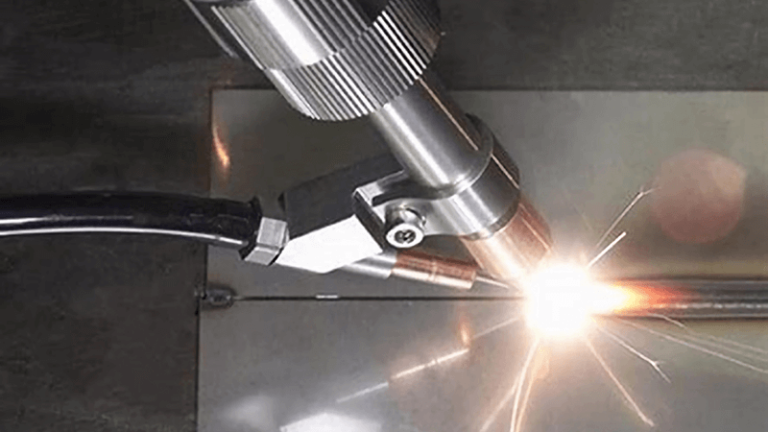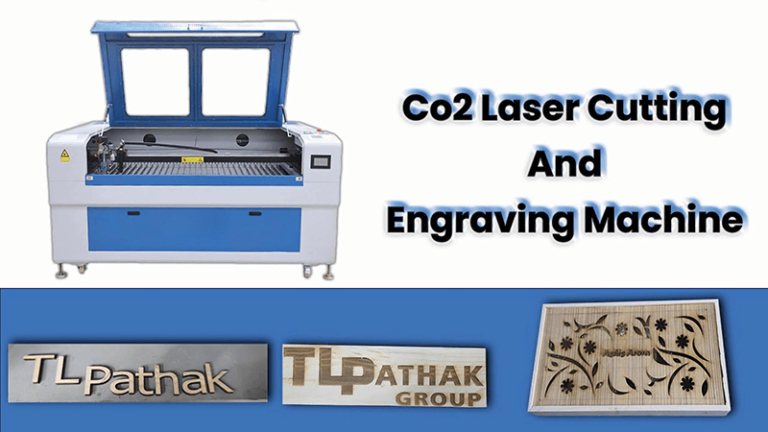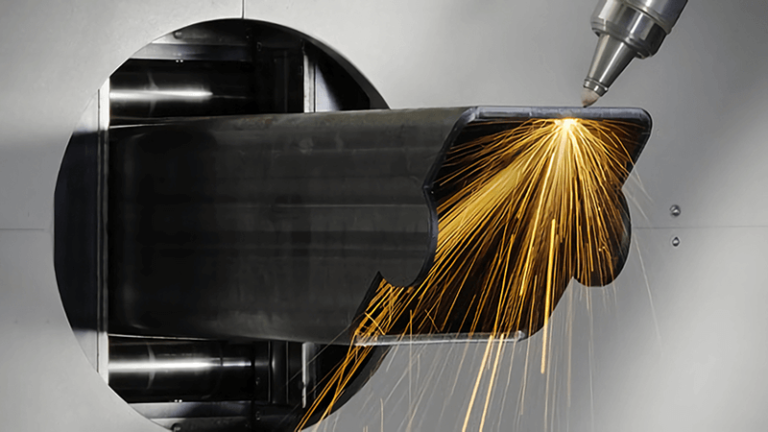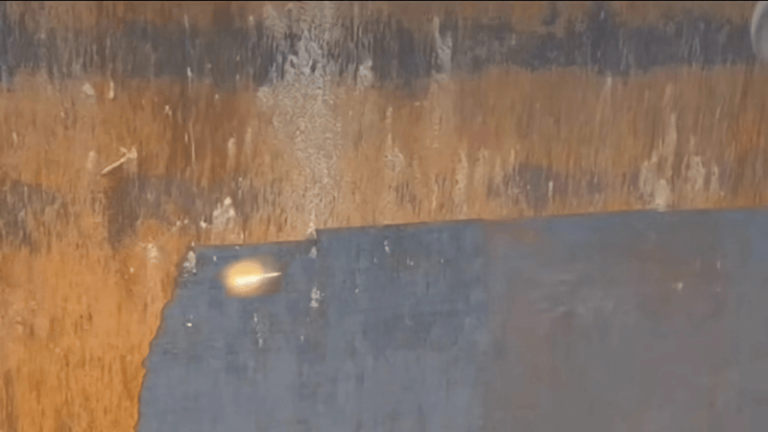Laser cutting has become an essential part of modern manufacturing, offering precision and versatility across a wide range of industries. But when it comes to CNC laser cutting machines, it's crucial to understand what materials they can and cannot cut through to make the right investment.
CNC laser cutting machines, especially fiber laser cutters, can efficiently cut through various materials, including metals like steel, aluminum, and copper, as well as non-metals such as wood, plastics, and fabrics. However, there are certain materials that these machines cannot cut through effectively.
In this article, we will dive deeper into the materials that fiber laser cutting machines can cut, what materials they cannot cut, and what you need to consider before making your machine selection. This will help you understand the capabilities and limitations of CNC laser cutters for your specific needs.

What materials can a laser cutter cut through?
Laser cutters are highly versatile and can cut through a variety of materials. Fiber lasers, in particular, are known for their efficiency in cutting metals, but they also work well with many non-metals. Whether you're cutting thin sheets or more complex parts, understanding the materials your laser cutter can handle is essential for getting the best results.
CNC fiber laser cutters can handle an array of materials, including steel, aluminum, brass, copper, and a wide range of non-metals like wood, plastics, and leather. The power and precision of fiber lasers make them ideal for industries that require cutting high-quality, detailed designs.
Fiber laser cutting machines have become a go-to solution for many industries due to their precision and versatility. Let's take a closer look at the different materials they can cut, and the features that make fiber lasers the preferred choice.
Metals cutting
Fiber laser cutters excel at cutting metals1, particularly ferrous and non-ferrous metals. These include steel, stainless steel, aluminum, brass, and copper. The key advantage of fiber lasers over CO2 lasers is their ability to cut through thicker metal materials with greater speed and precision. Fiber lasers are also more energy-efficient when cutting metals, which makes them cost-effective for industrial applications.
| Metal Type | Thickness Range | Laser Power Required | Ideal Use Case |
|---|---|---|---|
| Stainless Steel | 0.5mm to 25mm | 500W – 4kW | Automotive parts, structural components, signage |
| Mild Steel | 0.5mm to 20mm | 500W – 3kW | General fabrication, machinery, equipment |
| Aluminum | 0.5mm to 12mm | 500W – 2kW | Aerospace, automotive, precision parts |
| Copper | 0.5mm to 10mm | 1kW – 3kW | Electrical components, high-precision parts |
| Brass | 0.5mm to 10mm | 1kW – 2kW | Jewelry, electrical connectors, musical instruments |
The versatility of fiber lasers in cutting metals allows for precision and flexibility across various industries. Whether you're working with thin sheet metals or thicker gauges, fiber lasers offer the flexibility to achieve clean, precise cuts.
Non-metals
While fiber laser cutting machines2 are excellent for cutting metals, they are not typically used for cutting non-metals. CO2 laser cutters, on the other hand, are specifically designed to handle a wide range of non-metal materials with great precision. These machines are preferred for cutting materials like wood, acrylic, plastic, leather, and fabric. CO2 lasers are able to deliver higher power in wavelengths that are more readily absorbed by non-metal materials, which is why they are a better choice for cutting these substances.
| Material | Thickness Range | Laser Power Required | Ideal Use Case |
|---|---|---|---|
| Wood | 1mm to 25mm | 40W – 150W | Furniture, décor, custom engraving |
| Acrylic | 1mm to 20mm | 40W – 300W | Signage, display materials, awards |
| Plastic (PVC, PET) | 1mm to 10mm | 40W – 200W | Packaging, custom components |
| Leather | 1mm to 10mm | 40W – 100W | Fashion, upholstery, accessories |
| Fabric | 1mm to 5mm | 40W – 100W | Clothing, accessories, custom embroidery |
CO2 laser cutters3 provide smooth, precise edges and minimal heat-affected zones, making them ideal for creating intricate patterns and designs on non-metal materials. They are especially popular in industries like fashion, interior design, signage, and product packaging, where non-metal materials are common.
Advantages of CO2 Lasers for Non-metals
- Precision: CO2 lasers can cut with extremely high precision, allowing for fine details and clean edges, which is essential for industries like fashion and signage.
- Versatility: They can cut through a wide range of non-metal materials like wood, plastic, paper, and fabric with ease.
- Efficiency: CO2 lasers offer high cutting speeds, especially with thinner materials, making them ideal for high-volume production runs.
- Minimal Waste: The precision of the CO2 laser cutting process minimizes material waste, making it a cost-effective option for many applications.
While fiber lasers are the optimal choice for metal cutting, CO2 lasers shine when it comes to non-metals, offering a level of versatility and precision that is unmatched in the cutting of materials like wood, acrylic, and fabrics. Therefore, businesses working with both metals and non-metals often find it beneficial to have both fiber and CO2 laser cutters in their operations.
By understanding the capabilities of fiber lasers and CO2 lasers, you can optimize their use for the materials most relevant to your business.
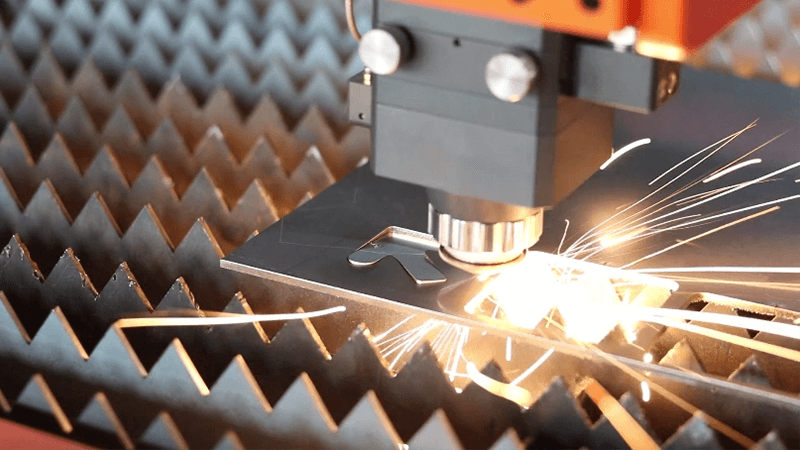
What material cannot be laser cut?
While laser cutting is incredibly versatile, it’s not suitable for every material. Some materials simply can’t be effectively cut with a laser cutter, or they may require specialized machines for processing. Understanding which materials are off-limits is just as important as knowing what can be cut.
Materials like thick glass, certain reflective metals, and materials that release harmful fumes, like PVC, cannot be effectively cut with a CNC laser cutter. Using a laser cutter on these materials can cause damage to the machine or pose health risks.
Despite the broad range of materials CNC laser cutting machines can handle, there are some that are unsuitable for laser cutting. Let’s explore the key materials that cannot be laser cut effectively and why they present challenges.
Glass
Glass4 is a difficult material for laser cutters to handle. While some specialized lasers can score or etch glass, cutting through it is generally not feasible. This is because glass is highly reflective, and it tends to scatter the laser beam rather than absorb it. In addition, glass can easily crack when exposed to the intense heat of a laser cutter.
| Property | Challenge in Cutting | Laser Type |
|---|---|---|
| Reflectivity | Glass reflects laser light, causing inefficiency | CO2 / Fiber |
| Brittleness | Risk of cracking during cutting | CO2 / Fiber |
| Thickness | Thick glass requires specialized cutting methods | CO2 / Fiber |
Reflective Metals5
Highly reflective metals, such as aluminum and copper, can be problematic for laser cutting. The laser beam tends to bounce off these materials, reducing the efficiency of the cutting process. This can also lead to damage to the laser equipment itself. For these materials, specialized techniques or equipment may be necessary.
| Metal Type | Reflectivity Impact on Laser Cutting | Solution |
|---|---|---|
| Aluminum | Reflects laser light, reducing efficiency | Use higher-powered lasers or specialized coatings |
| Copper | Reflects light, leading to reduced cutting precision | High-power fiber lasers with adjustments |
| Gold | Highly reflective and soft | Specialized cutting methods required |
PVC and Other Toxic Materials6
Certain materials like PVC (polyvinyl chloride) release toxic fumes when burned, which makes them unsafe to cut with a laser machine. Cutting PVC can cause harmful chemicals to be released into the air, posing a health risk to operators and damaging the laser cutting machine. It is important to always check the material's safety data sheet before attempting to cut it.
| Material | Hazard | Recommendation |
|---|---|---|
| PVC | Releases chlorine gas when cut | Avoid cutting with lasers |
| Polycarbonate | Melts and emits harmful gases | Use alternative cutting methods |
| ABS | Releases toxic fumes when heated | Avoid or use specialized ventilation |
By knowing the limitations of laser cutting, you can avoid potential risks and ensure you’re using the right tools for the job.
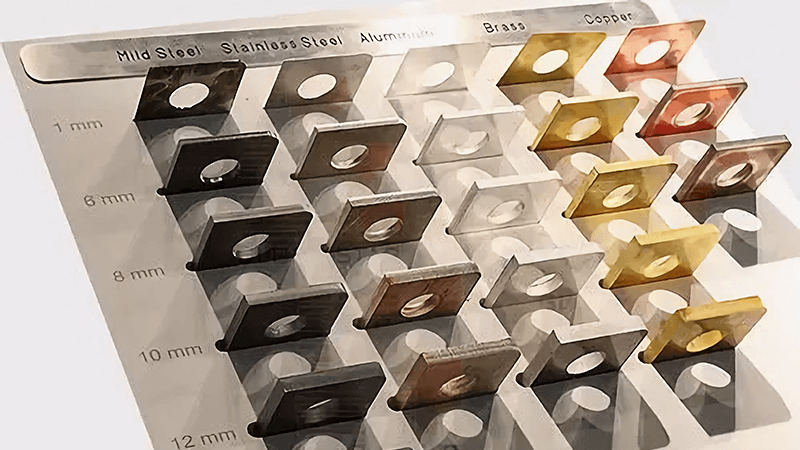
What material can laser not penetrate?
Not all materials are suitable for laser cutting, especially when it comes to materials that are too thick or dense. Understanding the limits of laser penetration helps businesses select the right equipment and materials for their projects.
Laser cutters, including fiber lasers, can only penetrate materials to a certain depth. Materials that are too thick, such as dense metals or extremely thick plastics, may exceed the laser’s ability to cut through them effectively.
While fiber lasers are powerful tools capable of cutting through many materials, there are limits to how thick or dense a material can be before the laser cannot penetrate it effectively. Let’s break down what factors influence laser penetration.
Material Thickness7
The thickness of a material is the primary factor that determines whether a laser cutter can effectively cut through it. Fiber lasers are great for cutting through metals like steel and aluminum, but if the material is too thick, the laser may not be able to penetrate fully. For instance, a fiber laser might struggle to cut through steel thicker than 30mm, depending on the power of the machine.
| Material | Max Thickness for Laser Cutting | Ideal Power for Cutting |
|---|---|---|
| Steel | Up to 30mm | 1.5kW – 3kW |
| Stainless Steel | Up to 25mm | 2kW – 4kW |
| Aluminum | Up to 12mm | 1kW – 3kW |
Material Density8
In addition to thickness, the density of a material plays a role in how well a laser cutter can penetrate it. Denser materials, like certain metals or ceramics, require more power to cut through. If the laser's power is not sufficient, it won’t penetrate the material effectively, leading to slow cutting speeds and incomplete cuts.
| Material | Density (g/cm³) | Impact on Laser Cutting |
|---|---|---|
| Copper | 8.96 | High density affects cutting efficiency |
| Titanium | 4.51 | Requires high power for deeper cuts |
| Ceramic | 3.2 – 4.0 | Dense material, needs specialized lasers |
Material Composition9
Materials that have a high heat conductivity, such as copper or aluminum, can make it harder for a laser cutter to maintain cutting speed and precision. This is because the heat from the laser dissipates quickly, making it difficult to focus the energy on the cutting path. This reduces the laser’s ability to cut through such materials effectively.
| Material | Heat Conductivity (W/m·K) | Cutting Impact |
|---|---|---|
| Copper | 398 | Requires high power |
| Aluminum | 205 | Slower cutting speeds |
| Steel | 50 | Efficient cutting with sufficient power |
Understanding these limitations helps in making the right choices when working with fiber laser cutting machines.

What items can you laser cut?
CNC laser cutters are capable of cutting a wide variety of items for different industries. From intricate designs in metals to precision cuts in non-metals, the possibilities are almost endless. But what are some of the most common items you can cut with a laser cutter?
Laser cutting is used for creating a wide range of items, including signs, automotive parts, jewelry, furniture, and even custom gifts. The precision and versatility of fiber lasers make them suitable for a broad spectrum of applications across many industries.
Laser cutting can be used to produce a variety of items across many different sectors. Let’s look at some of the most common items that are laser cut, and how fiber laser cutting machines10 are used to create them.
Signs and Displays
One of the most popular applications of laser cutting is in the creation of signs and displays. Whether it's for retail, trade shows, or branding purposes, laser cutting offers high precision, allowing for the creation of detailed and intricate designs. Acrylic, wood, and metal signs are often made using fiber laser cutters, ensuring clean edges and high-quality finishes.
| Material | Ideal Thickness for Laser Cutting | Common Use Case |
|---|---|---|
| Acrylic | 1mm to 15mm | Signage, display boards |
| Wood | 1mm to 10mm | Retail displays, store signage |
| Metal | 1mm to 5mm | Custom metal signs, logos |
Automotive and Aerospace Parts
The automotive and aerospace industries rely on laser cutting for the production of high-precision parts. Fiber lasers are used to cut various metals, such as steel and aluminum, to create components like brackets, panels, and structural parts. The high level of accuracy provided by fiber lasers makes them ideal for manufacturing complex parts that need to meet strict tolerances.
| Part Type | Material | Ideal Thickness for Cutting |
|---|---|---|
| Aerospace Panel | Aluminum | 0.5mm – 10mm |
| Automotive Bracket | Steel | 1mm – 15mm |
| Structural Part | Stainless Steel | 1mm – 12mm |
Jewelry and Custom Gifts
Laser cutting is increasingly used in the jewelry industry to create intricate designs in metals, such as gold, silver, and platinum. Fiber lasers can also be used to cut materials like wood and acrylic to create personalized gifts and keepsakes. Whether it’s engraving names or creating detailed patterns, laser cutting11 provides the fine detail needed for such items.
| Item Type | Material | Ideal Thickness for Laser Cutting |
|---|---|---|
| Jewelry | Gold, Silver, Acrylic | 0.5mm – 3mm |
| Custom Gifts | Wood, Acrylic | 1mm – 10mm |
Furniture and Home Décor
Laser cutting is also popular in the production of custom furniture12 and home décor items. Materials like wood, metal, and acrylic are often laser cut to create unique pieces with complex patterns and designs. Fiber lasers provide precision and versatility, making them an ideal choice for businesses looking to create one-of-a-kind items.
| Material | Ideal Thickness for Cutting | Common Use Case |
|---|---|---|
| Wood | 2mm – 12mm | Custom furniture, wall art |
| Metal | 0.5mm – 10mm | Custom furniture, décor items |

Conclusion
In conclusion, CNC laser cutting machines13, particularly fiber lasers, are incredibly versatile tools capable of cutting a wide variety of materials. From metals to plastics, fabrics, and wood, laser cutting offers precision, speed, and efficiency. However, it's important to understand the limitations of the technology, especially when it comes to thick, dense, or reflective materials. By carefully considering these factors, businesses can choose the right materials and machines for their needs, ensuring optimal results and efficient operations.
-
Discover the range of metals that can be effectively cut with fiber lasers, enhancing your knowledge of their applications. ↩
-
Explore the advantages of fiber laser cutting machines to understand their precision and versatility in various industries. ↩
-
Learn how CO2 laser cutters excel in cutting non-metal materials, providing insights into their efficiency and precision. ↩
-
Understanding the challenges of cutting glass with lasers can help you choose the right materials and methods for your projects. ↩
-
Exploring the issues with cutting reflective metals can guide you in selecting appropriate materials and techniques for laser cutting. ↩
-
Learning about the hazards of cutting PVC and similar materials can help ensure safety and compliance in your laser cutting operations. ↩
-
Explore how material thickness affects laser cutting efficiency and capabilities, ensuring optimal results in your projects. ↩
-
Learn about the relationship between material density and laser cutting effectiveness to enhance your cutting strategies. ↩
-
Discover how different material compositions affect laser cutting precision and speed, helping you choose the right materials. ↩
-
Explore this link to understand the technology behind fiber laser cutting machines and their applications in various industries. ↩
-
Discover the advantages of laser cutting in manufacturing processes and how it enhances precision and efficiency. ↩
-
Learn about the innovative ways laser cutting is used to create unique custom furniture designs. ↩
-
Know all things about laser cutting to get your solutions from Kirin Laser, getting your best price. ↩


